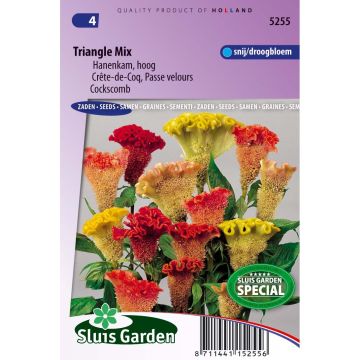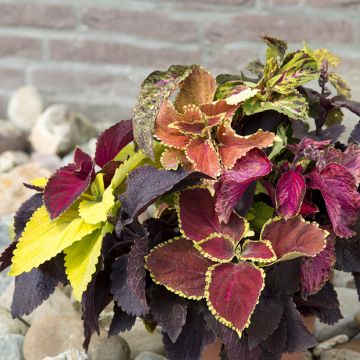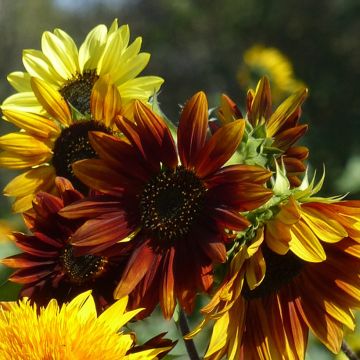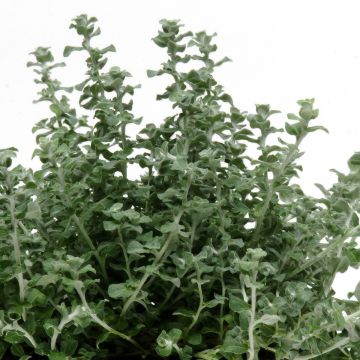

Echinacea pallida seeds - Pale purple coneflower
Echinacea pallida seeds - Pale purple coneflower
Echinacea pallida
Pale Purple Coneflower
Special offer!
Receive a €20 voucher for any order over €90 (excluding delivery costs, credit notes, and plastic-free options)!
1- Add your favorite plants to your cart.
2- Once you have reached €90, confirm your order (you can even choose the delivery date!).
3- As soon as your order is shipped, you will receive an email containing your voucher code, valid for 3 months (90 days).
Your voucher is unique and can only be used once, for any order with a minimum value of €20, excluding delivery costs.
Can be combined with other current offers, non-divisible and non-refundable.
Home or relay delivery (depending on size and destination)
Schedule delivery date,
and select date in basket
This plant carries a 6 months recovery warranty
More information
We guarantee the quality of our plants for a full growing cycle, and will replace at our expense any plant that fails to recover under normal climatic and planting conditions.
Would this plant suit my garden?
Set up your Plantfit profile →
Description
The pale coneflower (Echinacea pallida), recognisable by its flowers with long, thin, trailing petals in pale pink to mauve, is a particularly robust, yet elegant, wild perennial plant, ideal in naturalistic or country-style settings. Native to the North American Great Plains, this species stands out for its ability to adapt to difficult conditions and cold climates. In the garden, it attracts a variety of beneficial small wildlife such as pollinators, while requiring little maintenance.
Echinacea pallida (synonyms Brauneria pallida, Rudbeckia pallida) belongs to the Asteraceae family. It is a close relative of the purple coneflower Echinacea purpurea. This species originates from the central and southern regions of the United States, where it naturally grows in meadows on sandy soils that can be dry in summer. It is a perennial plant accustomed to competition from grasses. It has an upright habit, with stiff stems reaching between 60 cm and 1 m in height (on average 80 cm). Its leaves are narrow, lanceolate, and slightly greyish-green, measuring approximately 10 to 20 cm in length. It blooms in summer, from June-July to August-September. Its daisy-like flowers with a diameter of 5 to 7 cm feature a prominent orange-brown conical centre and narrow, trailing petals in pale pink to mauve. Its growth is relatively slow, but once well established, it forms magnificent floral clumps. The pale coneflower is disease-resistant and tolerates occasional dry periods. Its above-ground, deciduous vegetation emerges in spring and dries up in autumn.
The pale coneflower is ideal for naturalistic gardens, low-maintenance perennial beds, or flowering meadows. It pairs perfectly with other sun-loving hardy plants. It can be planted alongside white yarrow (Achillea millefolium), 'Forever Gold' rudbeckias (Rudbeckia fulgida), and grasses such as Pennisetum or Panicum. These plants share the same requirements for well-drained soil and light, creating a harmonious and colourful ensemble.
Report an error about the product description
Flowering
Foliage
Plant habit
Botanical data
Echinacea
pallida
Asteraceae
Pale Purple Coneflower
Brauneria pallida, Rudbeckia pallida
North America
Other Flower seeds A to Z
View all →Planting and care
To sow the seeds of pale coneflower (Echinacea pallida), it is advisable to cold stratify them for 4 to 6 weeks by placing them in the refrigerator in damp sand. Then, sow them in spring, at a depth of about 0.5 cm, in a light and well-drained soil. Keep the substrate moist until germination, which can take 2 to 3 weeks at a temperature of 20°C.
Cultivation: plant the young plants in full sun, in a well-drained soil, preferably poor or slightly sandy. The coneflower tolerates some drought once established and requires little watering. Prune the faded flowers to promote new flowering and a compact habit, or leave them in place to feed the birds in winter.
Sowing period
Intended location
This item has not been reviewed yet - be the first to leave a review about it.
Similar products
Haven't found what you were looking for?
Hardiness is the lowest winter temperature a plant can endure without suffering serious damage or even dying. However, hardiness is affected by location (a sheltered area, such as a patio), protection (winter cover) and soil type (hardiness is improved by well-drained soil).

Photo Sharing Terms & Conditions
In order to encourage gardeners to interact and share their experiences, Promesse de fleurs offers various media enabling content to be uploaded onto its Site - in particular via the ‘Photo sharing’ module.
The User agrees to refrain from:
- Posting any content that is illegal, prejudicial, insulting, racist, inciteful to hatred, revisionist, contrary to public decency, that infringes on privacy or on the privacy rights of third parties, in particular the publicity rights of persons and goods, intellectual property rights, or the right to privacy.
- Submitting content on behalf of a third party;
- Impersonate the identity of a third party and/or publish any personal information about a third party;
In general, the User undertakes to refrain from any unethical behaviour.
All Content (in particular text, comments, files, images, photos, videos, creative works, etc.), which may be subject to property or intellectual property rights, image or other private rights, shall remain the property of the User, subject to the limited rights granted by the terms of the licence granted by Promesse de fleurs as stated below. Users are at liberty to publish or not to publish such Content on the Site, notably via the ‘Photo Sharing’ facility, and accept that this Content shall be made public and freely accessible, notably on the Internet.
Users further acknowledge, undertake to have ,and guarantee that they hold all necessary rights and permissions to publish such material on the Site, in particular with regard to the legislation in force pertaining to any privacy, property, intellectual property, image, or contractual rights, or rights of any other nature. By publishing such Content on the Site, Users acknowledge accepting full liability as publishers of the Content within the meaning of the law, and grant Promesse de fleurs, free of charge, an inclusive, worldwide licence for the said Content for the entire duration of its publication, including all reproduction, representation, up/downloading, displaying, performing, transmission, and storage rights.
Users also grant permission for their name to be linked to the Content and accept that this link may not always be made available.
By engaging in posting material, Users consent to their Content becoming automatically accessible on the Internet, in particular on other sites and/or blogs and/or web pages of the Promesse de fleurs site, including in particular social pages and the Promesse de fleurs catalogue.
Users may secure the removal of entrusted content free of charge by issuing a simple request via our contact form.
The flowering period indicated on our website applies to countries and regions located in USDA zone 8 (France, the United Kingdom, Ireland, the Netherlands, etc.)
It will vary according to where you live:
- In zones 9 to 10 (Italy, Spain, Greece, etc.), flowering will occur about 2 to 4 weeks earlier.
- In zones 6 to 7 (Germany, Poland, Slovenia, and lower mountainous regions), flowering will be delayed by 2 to 3 weeks.
- In zone 5 (Central Europe, Scandinavia), blooming will be delayed by 3 to 5 weeks.
In temperate climates, pruning of spring-flowering shrubs (forsythia, spireas, etc.) should be done just after flowering.
Pruning of summer-flowering shrubs (Indian Lilac, Perovskia, etc.) can be done in winter or spring.
In cold regions as well as with frost-sensitive plants, avoid pruning too early when severe frosts may still occur.
The planting period indicated on our website applies to countries and regions located in USDA zone 8 (France, United Kingdom, Ireland, Netherlands).
It will vary according to where you live:
- In Mediterranean zones (Marseille, Madrid, Milan, etc.), autumn and winter are the best planting periods.
- In continental zones (Strasbourg, Munich, Vienna, etc.), delay planting by 2 to 3 weeks in spring and bring it forward by 2 to 4 weeks in autumn.
- In mountainous regions (the Alps, Pyrenees, Carpathians, etc.), it is best to plant in late spring (May-June) or late summer (August-September).
The harvesting period indicated on our website applies to countries and regions in USDA zone 8 (France, England, Ireland, the Netherlands).
In colder areas (Scandinavia, Poland, Austria...) fruit and vegetable harvests are likely to be delayed by 3-4 weeks.
In warmer areas (Italy, Spain, Greece, etc.), harvesting will probably take place earlier, depending on weather conditions.
The sowing periods indicated on our website apply to countries and regions within USDA Zone 8 (France, UK, Ireland, Netherlands).
In colder areas (Scandinavia, Poland, Austria...), delay any outdoor sowing by 3-4 weeks, or sow under glass.
In warmer climes (Italy, Spain, Greece, etc.), bring outdoor sowing forward by a few weeks.



















































